Employee Termination: A Challenging Task for Employers
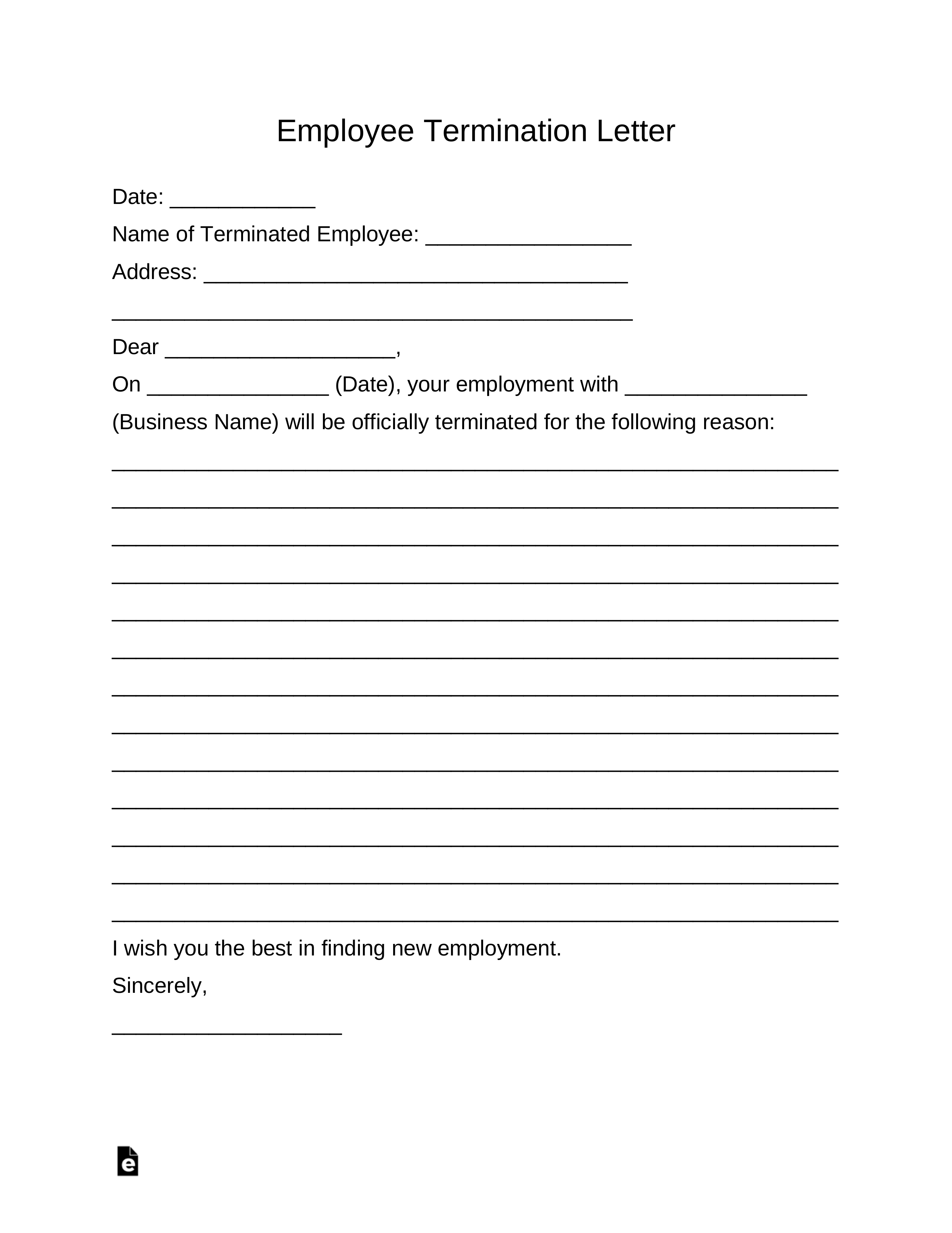 Terminating an employee is never an easy task for employers. It is a decision that requires careful consideration, legal compliance, and professionalism. In today’s corporate world, employers must adhere to strict guidelines when it comes to employee termination. This is not only important for the well-being of the organization but also for maintaining a harmonious work environment.
Terminating an employee is never an easy task for employers. It is a decision that requires careful consideration, legal compliance, and professionalism. In today’s corporate world, employers must adhere to strict guidelines when it comes to employee termination. This is not only important for the well-being of the organization but also for maintaining a harmonious work environment.
The Importance of an Employee Termination Letter
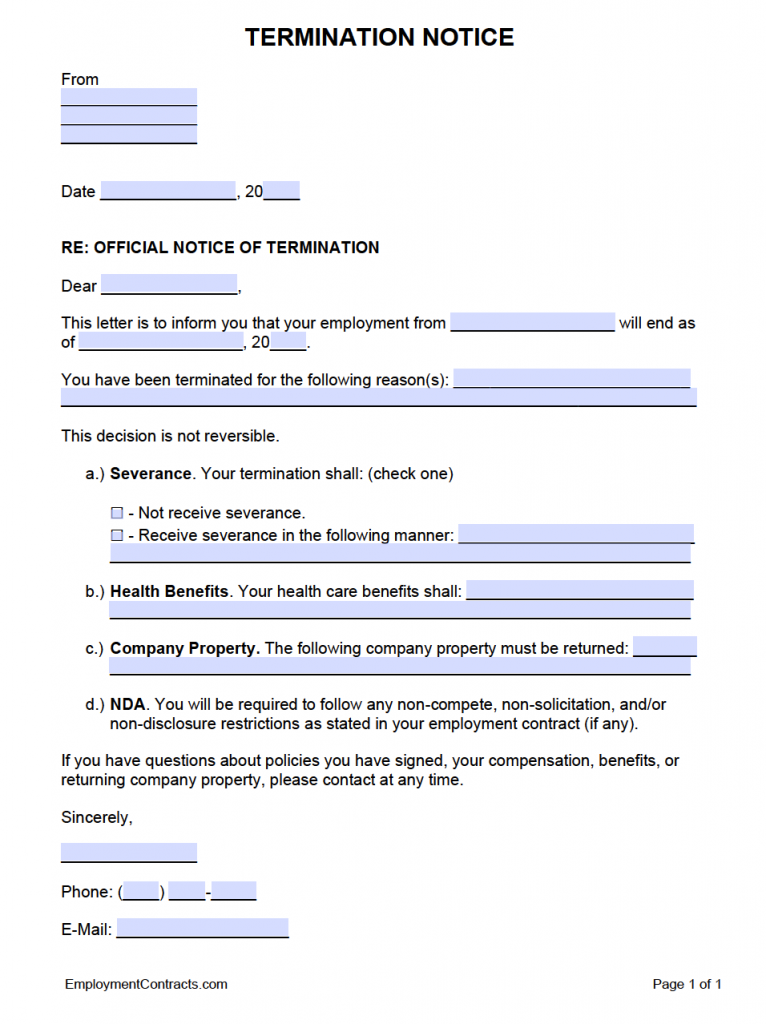 One vital aspect of the employee termination process is the issuance of an employee termination letter. This letter serves as a formal document that communicates the decision to terminate the employment relationship. It outlines the reasons for termination, any severance packages, and the date of termination. It also helps protect employers from potential legal repercussions by establishing a clear paper trail of the termination process.
One vital aspect of the employee termination process is the issuance of an employee termination letter. This letter serves as a formal document that communicates the decision to terminate the employment relationship. It outlines the reasons for termination, any severance packages, and the date of termination. It also helps protect employers from potential legal repercussions by establishing a clear paper trail of the termination process.
When crafting an employee termination letter, employers must ensure that it is both professional and respectful. It should clearly state the reasons for termination while maintaining a tone of empathy and understanding. This is crucial for maintaining the dignity and reputation of the organization and mitigating any negative impact on the terminated employee.
Sample Employee Termination Forms: A Valuable Resource
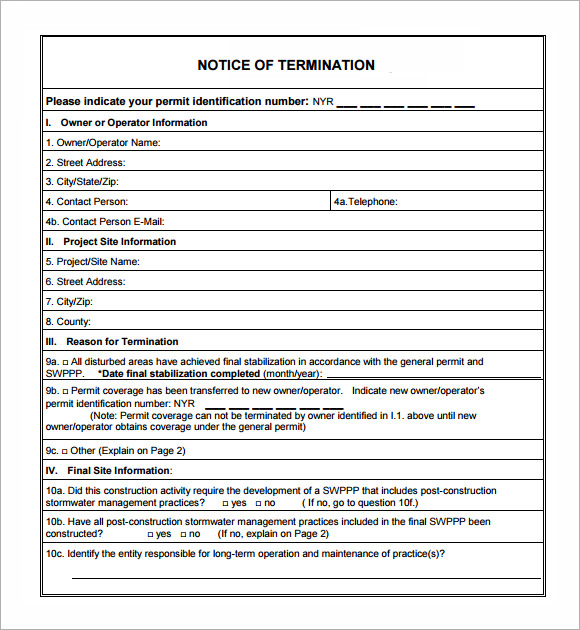 For employers who are unfamiliar with the process or seeking guidance, sample employee termination forms can be invaluable. These forms provide a template that can be customized to suit specific organizational requirements. They offer guidance on what information is important to include in the termination form and provide a framework for documenting the termination process.
For employers who are unfamiliar with the process or seeking guidance, sample employee termination forms can be invaluable. These forms provide a template that can be customized to suit specific organizational requirements. They offer guidance on what information is important to include in the termination form and provide a framework for documenting the termination process.
By utilizing sample termination forms, employers can ensure that they are following established best practices and adhering to legal obligations. These forms often include sections for documenting the reason for termination, any prior warnings or disciplinary actions, and details about any exit interviews or final documentation required from the employee.
Streamlining the Termination Process
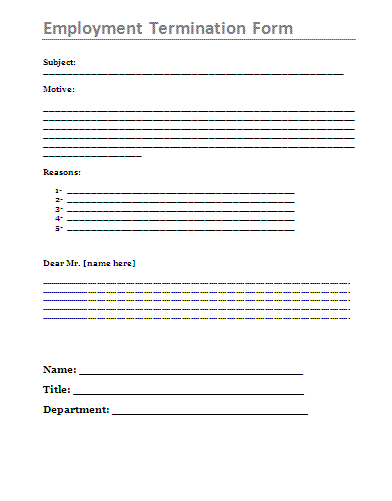 The termination process can be complex and time-consuming for employers. However, the use of printable employment termination forms can help streamline this process. By having a standardized form in place, employers can ensure consistency and eliminate any ambiguity or confusion.
The termination process can be complex and time-consuming for employers. However, the use of printable employment termination forms can help streamline this process. By having a standardized form in place, employers can ensure consistency and eliminate any ambiguity or confusion.
Printable employment termination forms also provide a clear structure for gathering all the necessary information related to the termination. This can include details about the employee’s final paycheck, benefits, return of company property, and employment references. These forms serve as a comprehensive record of the termination process and can assist in resolving any future disputes or inquiries.
Compliance with Legal Requirements
 When terminating an employee, it is essential for employers to comply with legal requirements in order to minimize legal risks. Free printable notice of termination forms can be a valuable tool in this regard. These forms often incorporate legal language and clauses that protect the organization from potential litigation.
When terminating an employee, it is essential for employers to comply with legal requirements in order to minimize legal risks. Free printable notice of termination forms can be a valuable tool in this regard. These forms often incorporate legal language and clauses that protect the organization from potential litigation.
Notice of termination forms typically include details about the applicable labor laws, the employee’s rights and obligations, and any financial compensations or benefits owed to the terminated employee. They serve as a reminder to employers of their legal responsibilities and help ensure compliance with relevant employment laws.
Seeking Professional Assistance

Remember, terminating an employee is not just about ending their employment; it is also about protecting the organization and maintaining a positive work culture. By following best practices, utilizing termination forms, and seeking professional assistance when needed, employers can navigate the process with greater confidence and ensure that the rights and dignity of all parties involved are respected.
Conclusion
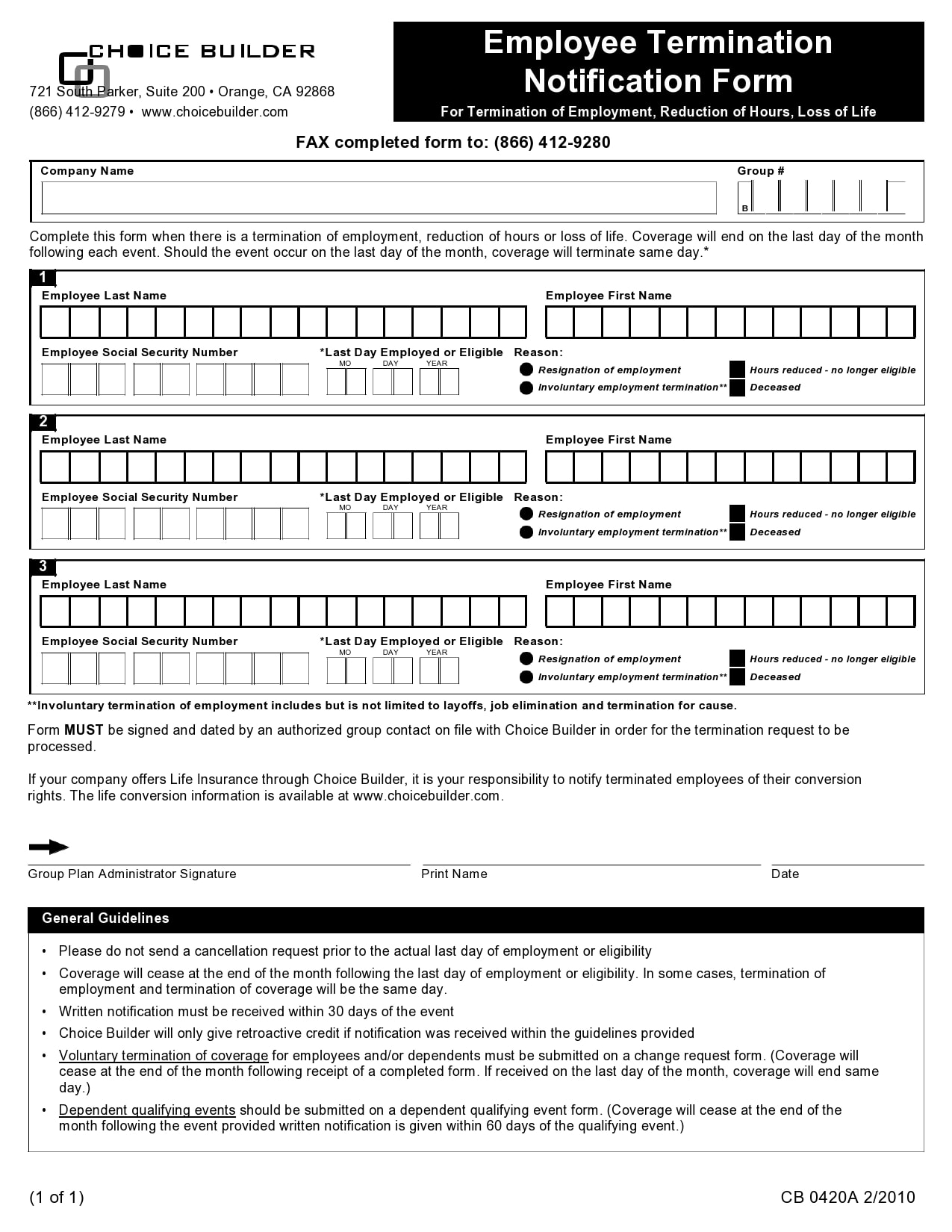 Employee termination is a challenging responsibility that should be approached with care and professionalism. The use of employee termination forms, such as those provided in this article, can be instrumental in guiding employers through the termination process. These forms provide structure, legal compliance, and a clear record of the termination, helping employers navigate this sensitive task effectively and respectfully.
Employee termination is a challenging responsibility that should be approached with care and professionalism. The use of employee termination forms, such as those provided in this article, can be instrumental in guiding employers through the termination process. These forms provide structure, legal compliance, and a clear record of the termination, helping employers navigate this sensitive task effectively and respectfully.
It is crucial to remember that terminating an employee should always be a last resort. Employers should strive to provide clear expectations, regular feedback, and opportunities for improvement to their employees. By maintaining open lines of communication and supporting their workforce, employers can foster a positive work environment conducive to growth and productivity.
Although employee termination can be uncomfortable, it is an essential aspect of effective people management. By approaching the process with empathy, professionalism, and compliance, employers can handle employee terminations in a manner that upholds the organization’s reputation and maintains a supportive work culture.